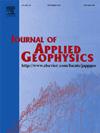Rotary detection using ground penetrating radar based on a B-Scan compressed sensing imaging algorithm
IF 2.2
3区 地球科学
Q2 GEOSCIENCES, MULTIDISCIPLINARY
引用次数: 0
Abstract
In this work, we propose an imaging algorithm applicable to the Ground Penetrating Radar (GPR) rotary detection scenario. The constructed sparse matrix is interpretable, strictly following the actual physical model, and the convex optimization objective function is not the conventional L1 norm but the inverse Huber norm. A solver with a primal-dual interior point method is used to solve the convex optimization problem.Moreover, the study proposes a new metric for evaluating imaging performance. Firstly, we compared different algorithms on simulation data, demonstrating the superiority of the proposed algorithm in multi-target imaging;subsequently, a reasonable interpretation of the weight values involved in the proposed metric was provided;then, to test the robustness of the algorithm, it was proven on data with different Peak Signal-to-Noise Ratio (PSNR) and different sampling rates;next, sensitivity analysis was conducted on the three parameters involved in the inverse Huber norm and beam width, and empirical parameter values were proposed;finally,the study selected appropriate parameters within the optimal range of the proposed algorithm to perform imaging comparisons on experimental data.We look forward to this work promoting the development of the GPR detection field.
基于b扫描压缩感知成像算法的探地雷达旋转探测
本文提出了一种适用于探地雷达(GPR)旋转探测场景的成像算法。构造的稀疏矩阵具有可解释性,严格遵循实际物理模型,且凸优化目标函数不是传统的L1范数,而是逆Huber范数。采用原对偶内点法求解凸优化问题。此外,该研究还提出了一种评估成像性能的新指标。首先在仿真数据上对不同算法进行比较,证明了所提算法在多目标成像中的优越性;然后对所提度量所涉及的权值进行合理解释;然后在不同峰值信噪比(PSNR)和不同采样率的数据上对所提算法进行鲁棒性检验;对Huber逆范数和波束宽度所涉及的三个参数进行敏感性分析,并提出经验参数值;最后在所提算法的最优范围内选择合适的参数,对实验数据进行成像比较。我们期待这项工作能够推动探地雷达探测领域的发展。
本文章由计算机程序翻译,如有差异,请以英文原文为准。
求助全文
约1分钟内获得全文
求助全文
来源期刊

Journal of Applied Geophysics
地学-地球科学综合
CiteScore
3.60
自引率
10.00%
发文量
274
审稿时长
4 months
期刊介绍:
The Journal of Applied Geophysics with its key objective of responding to pertinent and timely needs, places particular emphasis on methodological developments and innovative applications of geophysical techniques for addressing environmental, engineering, and hydrological problems. Related topical research in exploration geophysics and in soil and rock physics is also covered by the Journal of Applied Geophysics.
 求助内容:
求助内容: 应助结果提醒方式:
应助结果提醒方式:


